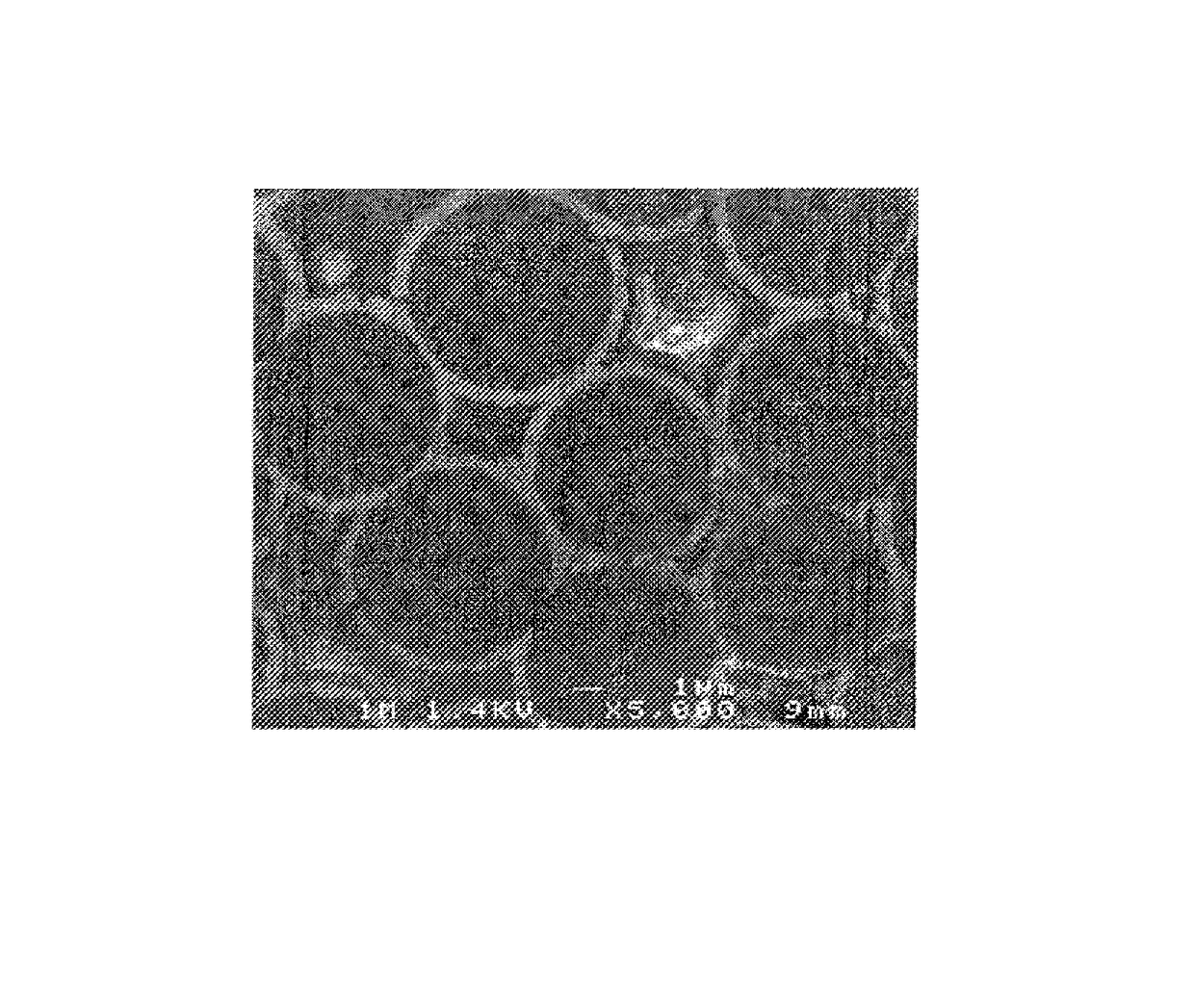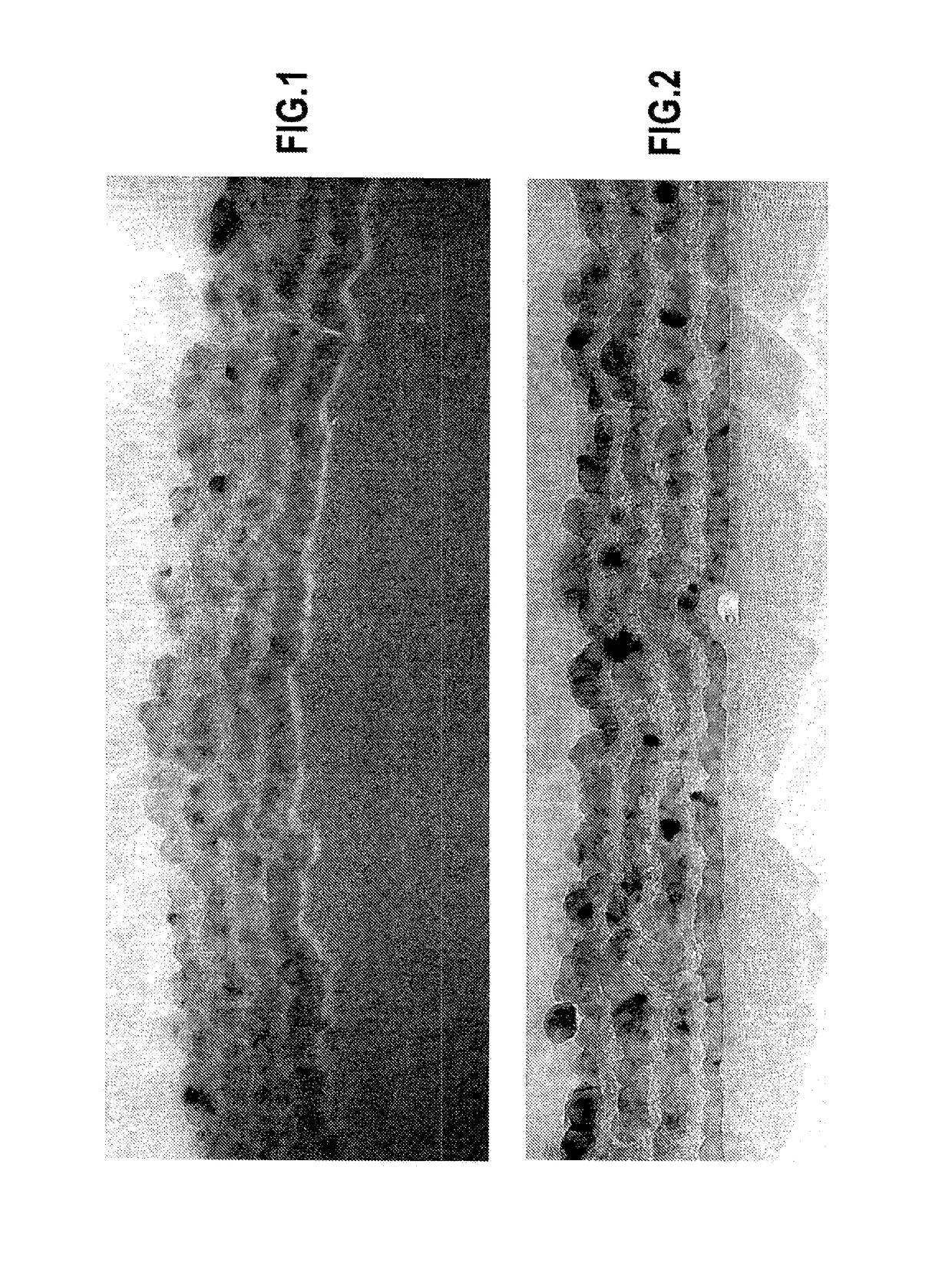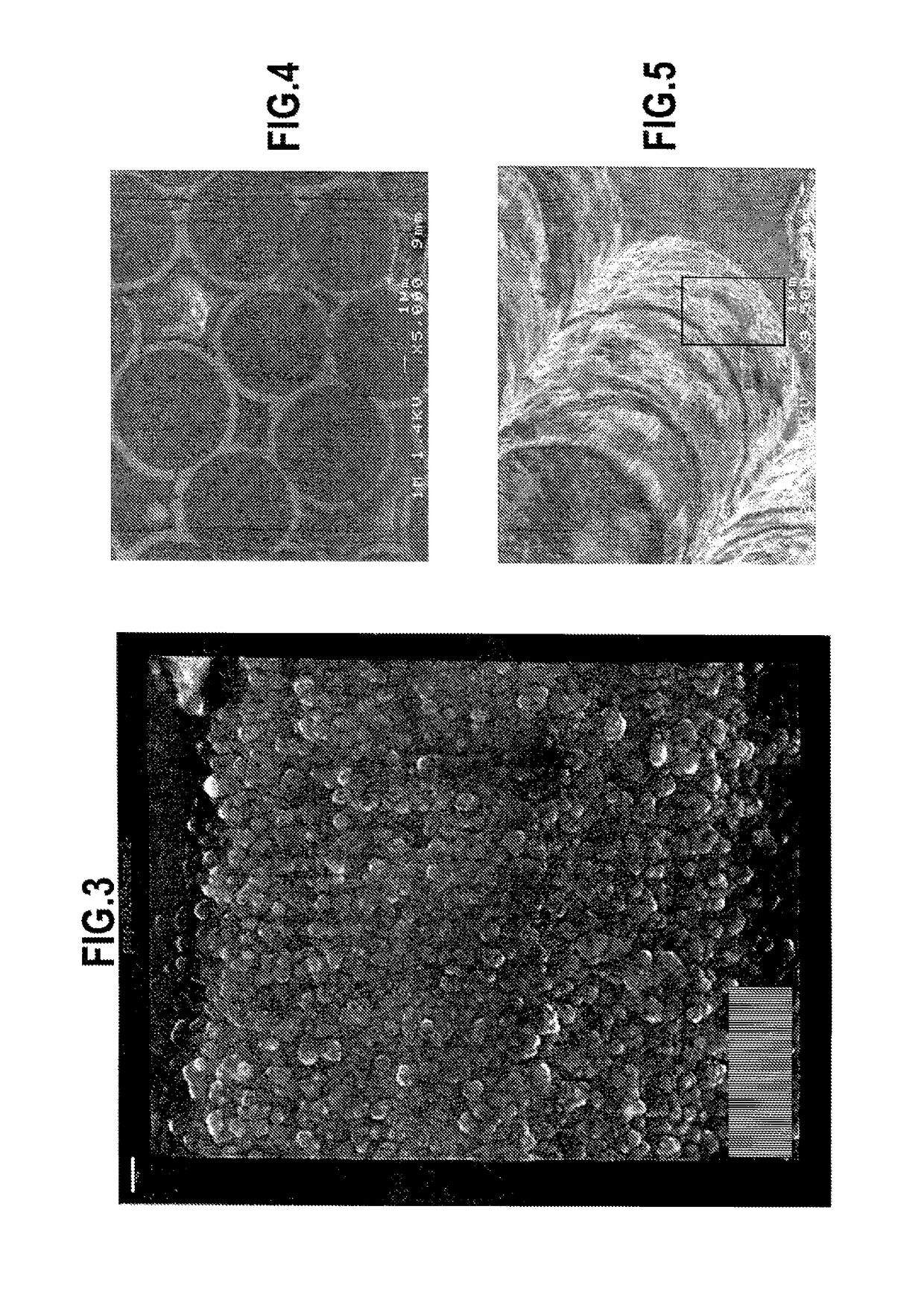Ceramic matrix composite material part
a ceramic matrix and composite material technology, applied in the field of ceramic matrix composite parts, can solve the problems of degrading the cmc material, cracking the matrix in practice, etc., and achieve the effect of improving the li
- Summary
- Abstract
- Description
- Claims
- Application Information
AI Technical Summary
Benefits of technology
Problems solved by technology
Method used
Image
Examples
example 1
C Fibers, (BCpropane / SiC)×4 Interphase, Matrix of PyC, B4C, SiC, Si—B—C Type
[0062]Fiber preforms were obtained from a fabric made by multilayer weaving of carbon yarns. The weaving was performed with an interlock type weave so as to increase the delamination strength of the material that was finally obtained. Preforms were obtained by being cut out from the resulting multilayer fabric and by being held between two perforated plates of a graphite shaper so as to present a fiber volume fraction (i.e. the percentage of the apparent volume of the preform occupied by the fibers) generally lying in the range approximately 30% to 50%.
[0063]An interphase coating made up of boron-doped pyrolytic carbon layers alternating with SiC layers was made by conventional CVI on the fibers of the preforms. The coating made up of four BC / SiC bi-layers is written (BC / SiC)×4.
[0064]Each elementary layer of BC was deposited with a reaction gas containing a mixture of propane C3H8 and of boron trichloride BC...
example 2
C Fibers, (BCpropane / SiC)×4 Interphase, Matrix of BC, B4C, SiC, Si—B—C Type
[0071]The procedure was the same as in example 1, except for the sequenced matrix in which the pyrolytic carbon PyC of the crack-deflector layers was replaced with boron-doped carbon BC of a nature similar to that of the interphase coating.
example 3
C Fibers, PyCCH4 / SiC Interphase, Matrix of PyC, B4C, SiC, Si—B—C Type
[0072]The procedure was the same as in example 1, except for the interphase coating, which was of the PyC / SiC type formed by an elementary layer of PyC covered by an elementary layer of SiC. The elementary layer of PyC was obtained by conventional CVI with a gas in which the carbon precursor was natural gas, i.e. essentially methane. The target mean thicknesses for the layers of PyC and of SiC were respectively about 100 nm and about 1 μm, sufficient for consolidating the preforms.
[0073]FIG. 4 shows that the elementary layer of SiC presents a relatively great surface roughness generated by the presence of coarse grains of SiC having a size greater than 50 nm.
PUM
| Property | Measurement | Unit |
|---|---|---|
| roughness | aaaaa | aaaaa |
| roughness | aaaaa | aaaaa |
| thickness | aaaaa | aaaaa |
Abstract
Description
Claims
Application Information
 Login to View More
Login to View More - R&D
- Intellectual Property
- Life Sciences
- Materials
- Tech Scout
- Unparalleled Data Quality
- Higher Quality Content
- 60% Fewer Hallucinations
Browse by: Latest US Patents, China's latest patents, Technical Efficacy Thesaurus, Application Domain, Technology Topic, Popular Technical Reports.
© 2025 PatSnap. All rights reserved.Legal|Privacy policy|Modern Slavery Act Transparency Statement|Sitemap|About US| Contact US: help@patsnap.com



